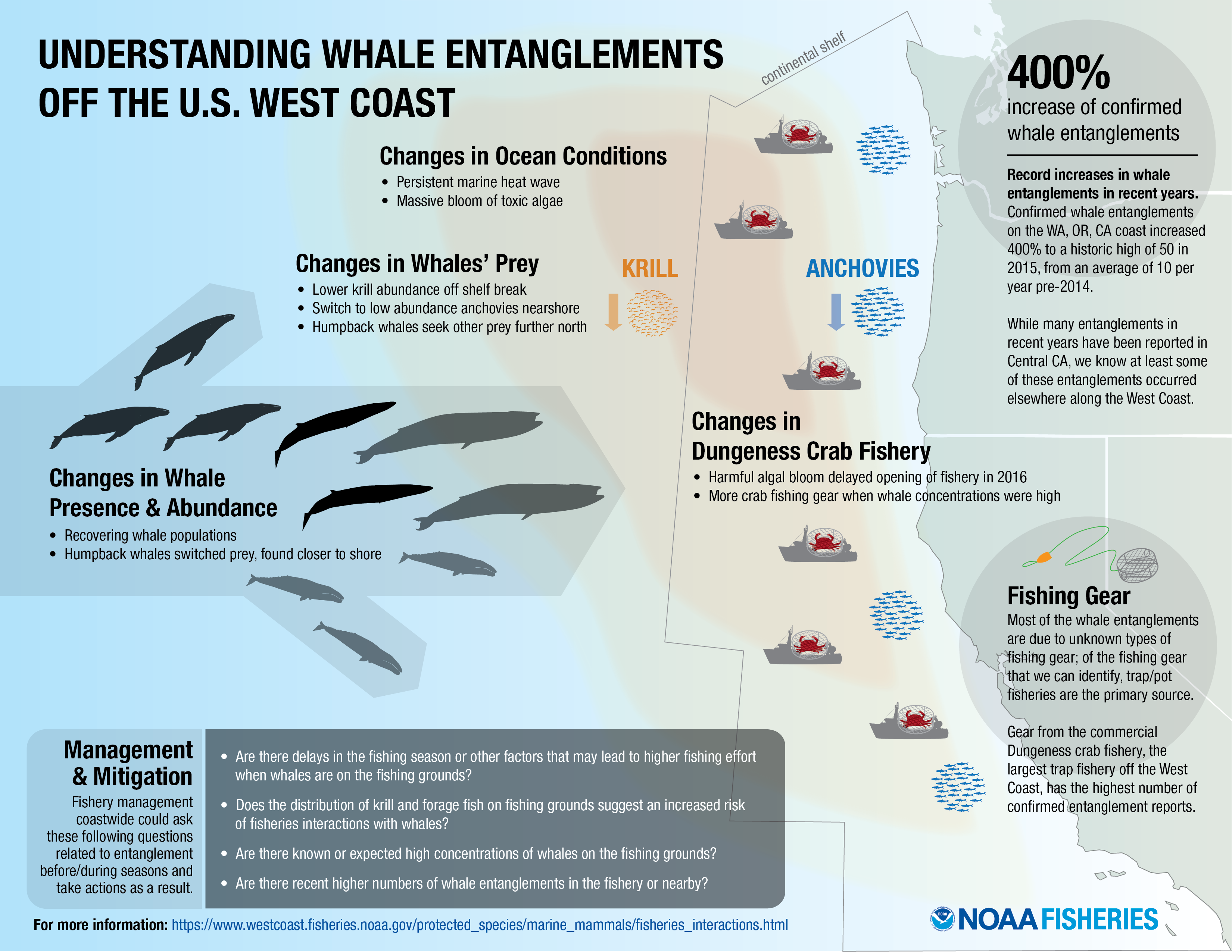Why do whales become entangled in fishing gear, and can we minimize these events?
The number of large whale entanglements confirmed by NOAA Fisheries has increased off the U.S. West Coast in recent years. This alarming pattern has mobilized efforts to understand and address factors that contribute to whale entanglement in fishing gear (Figure 1). NOAA Fisheries is responsible for recovering and protecting these whales under the Marine Mammal Protection Act and Endangered Species Act. The states are responsible for managing many of the fisheries that interact with these whales.
In part, the increase was spurred by a unique combination of variables: environmental conditions, distribution of fishing effort, distributions of important whale prey, and public awareness (Figure 2). In response, multiple government agencies, fishermen, and environmental organizations are actively engaged and committed to finding solutions that reduce the number of entanglements while continuing to support economically valuable fisheries.


